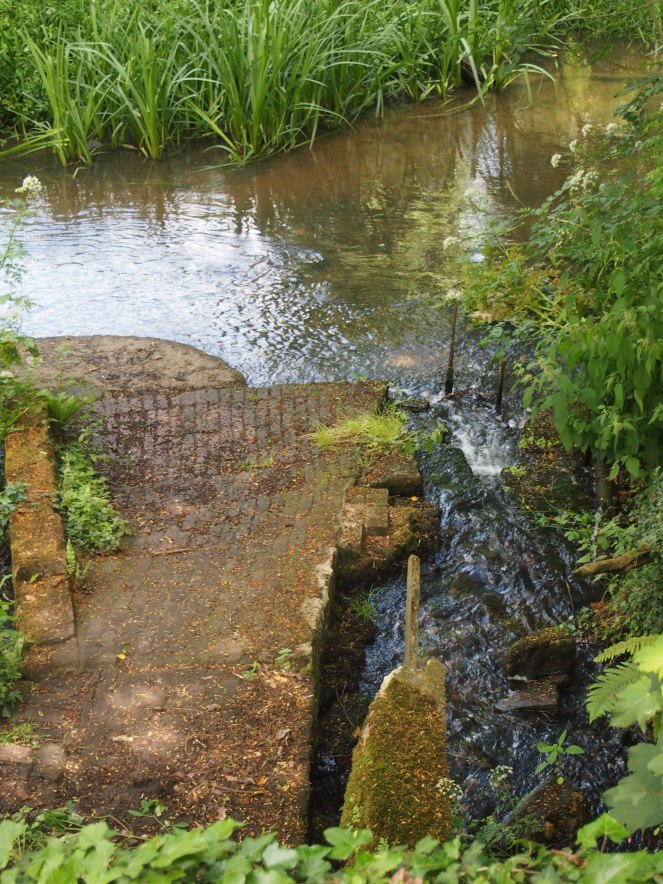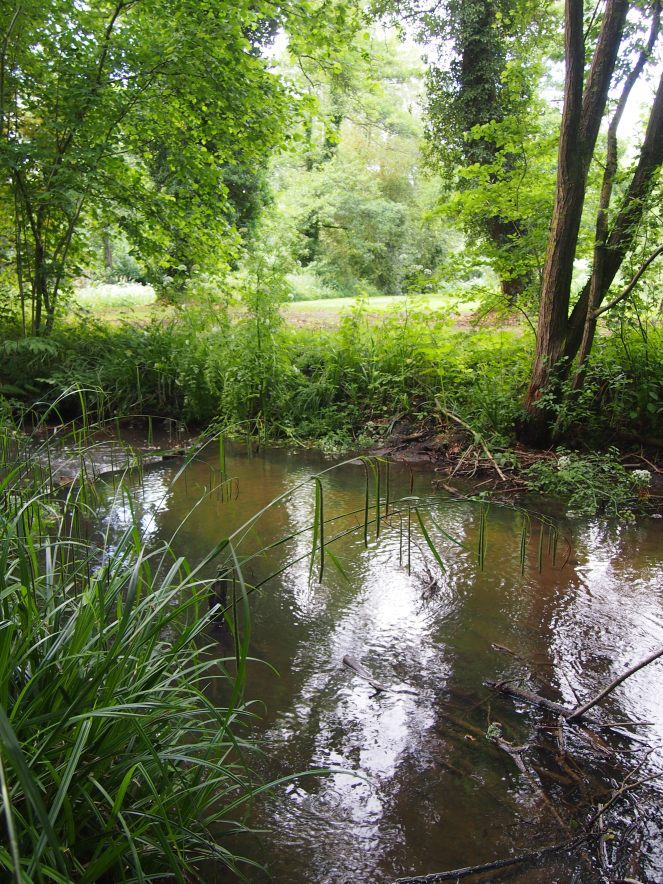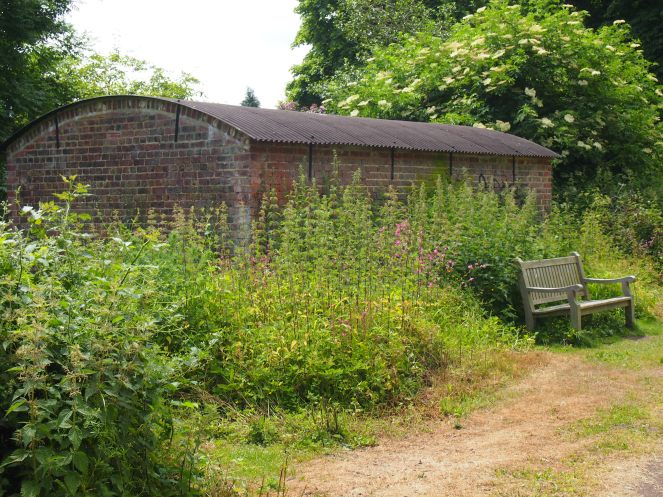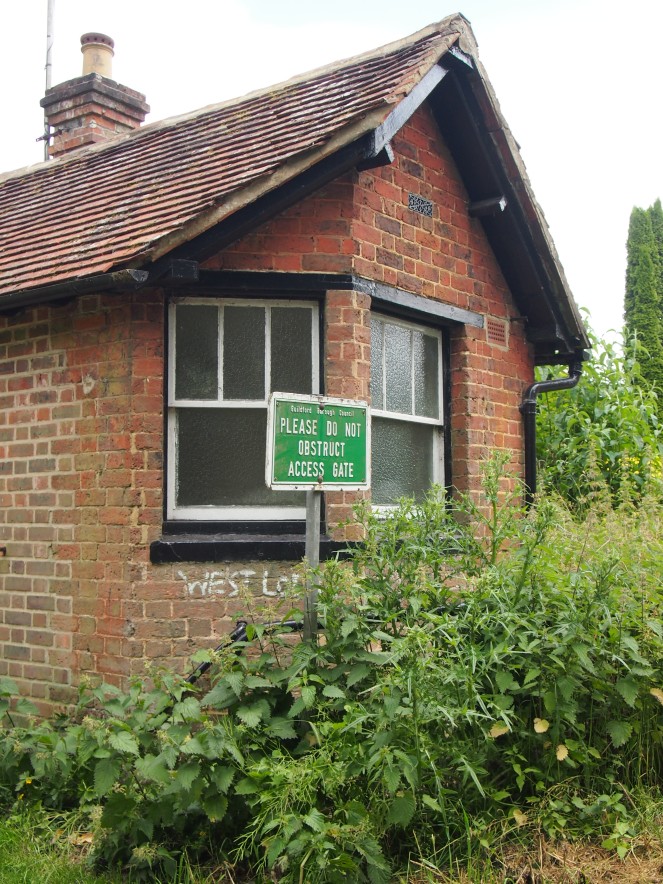The Surrey Hills – an Area of Outstanding Natural Beauty – isn’t the first place that you’d associate with heavy industry. Today, thousands of people are drawn to the picturesque hills and the lush green countryside. However, hidden away in the valley close to the village of Chilworth, near Guildford, are the ruins of an industry that dominated the area for almost 300 years – the manufacturing of gunpowder.

The fast flowing Tillingbourne river attracted industry to Chilworth, as the river could be utilised to power water mills. The Domesday Book of 1086 recorded a mill in the area, and in later centuries paper and corn mills were established. In the 16th Century, the Evelyn family set up a gunpowder works in the area after being awarded the royal monopoly on gunpowder manufacture. In 1626, the East India Company also established a gunpowder mill on the banks of the Tillingbourne.

The East India Company was a privately owned enterprise that was set up to conduct trade with the East Indies (south and east Asia) and was awarded a Royal Charter by Elizabeth I in 1600. It was regularly in conflict with the Dutch and Portuguese East India Companies which were also vying for footholds on the Indian Subcontinent. This conflict led the East India Company to raise its own armies in order to protect its trading and territorial interests, so the gunpowder works it opened at Chilworth in 1626 was used to supply its forces abroad.
The manufacture of gunpowder also involved commodities that the East India Company was importing to the British Isles. Saltpetre, a nitrate used as the oxidising component in gunpowder, was imported in huge quantities from India – during the reign of King Charles II (1660-1685), it is thought that as much as 1,000 tonnes of saltpetre was shipped to England each year, and this quantity only increased as bloody wars on the European continent demanded more and more gunpowder.

By the middle of the 17th Century, the gunpowder works at Chilworth were no longer run by the East India Company, but by other private enterprises. Their main customer was the English government, and during the English Civil War the mills at Chilworth helped to supply the Parliamentarian forces with gunpowder. However, governments were not always good at paying the powder manufacturers on time, and the number of powder mills at Chilworth fluctuated over time, as some enterprises failed when their owners experienced financial problems. In 1704, only one of the three gunpowder mills at Chilworth was still manufacturing gunpowder (one of the other mills was converted into a paper mill). However, business picked up again in the 19th Century and, as we’ll see, the gunpowder works expanded in this period.
But why was Chilworth chosen as the site for the gunpowder works? Apart from the favourable location by the Tillingbourne for operating water mills, the valley was full of alder trees which were ideal for making charcoal, another of the materials required to manufacture gunpowder.

Originally invented in China in the 9th Century, gunpowder is a mix of saltpetre, charcoal and sulphur. Each of the components has to be ground up before being mixed together – altogether, there are six separate stages in the process of making gunpowder, each requiring its own building. First of all, the ingredients would be weighed out and mixed together in the mixing house, then in the powder mill the ingredients were mixed with water (to minimise the risk of fire) and ground together between two vertical mill wheels.

Once the ingredients had been ground, more water was added to form what was called a “mill cake” – this was then compressed in the pressing house. This process made the gunpowder mixture more potent, improving its explosive qualities. The pressed gunpowder was then carefully sieved in the corning house, and then – in the glazing house – rolled with lead to make it more water-resistant. Finally, the gunpowder would be taken to the packing house, where it was weighed and packed into barrels, ready for transport and sale.
The raw materials for producing gunpowder were brought into Chilworth in barges on the river, and barrels of gunpowder were transported away from Chilworth in the same way. By the 1650s, a watercourse called the New Cut was dug to the south of the Tillingbourne to provide a new millrace for the water wheels powering the mills. Other watercourses were also dug, some to power water wheels and others for transport. These channels are all quite narrow – narrow watercourses allowed water to flow through the water wheels more quickly, and the boats used to transport items to and from the gunpowder works were small punts and barges rather than larger crafts.


Another reason why the Tillingbourne valley was well suited to the manufacturing of gunpowder was the fact that the different workshops could be spread out over a large area. This was an important safety measure: having the workshops situated away from each other, with trees in between, meant that if there was an explosion in one building, it was less likely to spread to other buildings and cause a larger amount of destruction. We’ll see a bit later in the post just how important this was.


William Cobbett, a journalist and pamphleteer who became famous for his support of Radical politics, visited Chilworth in 1822 and recorded his observations in his book Rural Rides. Cobbett was struck by the beauty of the valley, and horrified by the industry that blighted it:
This valley, which seems to have been created by a bountiful providence, as one of the choicest retreats of man; which seems formed for a scene of innocence and happiness, has been, by ungrateful man, so perverted as to make it instrumental in effecting two of the most damnable of purposes; in carrying into execution two of the most damnable inventions that ever sprang from the minds of men under the influence of the devil! namely, the making of gunpowder and of bank-notes that! … here has the devil fixed on as one of the seats of his grand manufactory; and perverse and ungrateful man not only lends him his aid, but lends it cheerfully!

The most substantial remains of the gunpowder works are the buildings from the late 19th Century. The introduction of steam power in the 1860s allowed the gunpowder works to expand significantly. By the end of the century, Chilworth was manufacturing a number of different types of gunpowder suitable for military and sporting purposes. In 1885 the Sharp family, who had owned the gunpowder works since 1819, sold the works to the newly-formed Chilworth Gunpowder Company, which raised £100,000 worth of shares – money which was invested in the site and helped it to produce a more diverse range of explosives.



The First World War brought with it an enormous demand for explosives, and the works at Chilworth became an important part of the war effort, manufacturing cordite. Anti-aircraft guns were installed to protect the site, and although German airships attempted to locate and bomb the gunpowder works, the closest air raid to Chilworth was at nearby Guildford in 1915.
What would life have been like for those employed by the gunpowder works, and those who lived nearby? The West Lodge, which workers would have passed on their way to and from their shifts, still survives today as a cottage. The majority of those employed at the gunpowder works would not have been working directly with the explosives, but were instead coopers who made the barrels that the gunpowder would go into after manufacture. Around 400 people were employed by the gunpowder works, and a history of the site compiled by Guildford Borough Council describes the powder works as playing “a prominent part in community life and [taking] pride in itself as a benevolent employer.” Along with a local printing works, the owners of the gunpowder works funded the Greshambury Institute in Chilworth, where workers could attend art and science classes.


Newspaper reports from the 19th and early 20th Centuries show the dangers of working with a substance as explosive as gunpowder. There was a constant risk of explosions, and on numerous occasions fatal accidents occurred. In August 1867, two men were killed in an explosion, the exact cause of which was never determined. A number of newspapers carried a report of the funeral of the two men, describing in poignant detail the plight of the widow of one of the men killed.
Ellen Farnfield’s position is particularly lamentable – a little over eighteen years of age, and about to become the mother of a second child – not a farthing from the club, her husband wanting five days of being a free member. She bears a most irreproachable character as a respectable and well-conducted young women. (Kentish Chronicle, 13th August 1864)
This report gives us a fleeting and rare insight into the problems faced by those whose relatives were killed in accidents at the gunpowder works. A terse note in the Edinburgh Evening News on 11th August 1874 simply states: “Both the men who were injured in the explosion at the Chilworth Powder Mills last week are now dead.”
Another fatal accident occured in 1901, with a seemingly innocuous cause. Six men lost their lives, and an inquest determined that the accident was caused by “a spark from a hob-nailed boot worn by one of the men outside the building.” The same report goes on:
It was not contrary to the Home Office regulations to wear hob-nailed boots outside. Witnesses could not speak too highly of the efficiency of the arrangements in the factory for ensuring the safety of the workers… [The jury] were pleased to learn that the company were prepared to supply outside men with special boots, to minimise, as far as possible, the repetition of such an accident. (Sunderland Daily Echo and Shipping Gazette, 23rd February 1901)
Chilworth was an important site for the development of safety measures – it was discovered that building banks of earth close to the buildings where gunpowder was being made helped to contain explosions and prevent other buildings from being endangered. These banks were strengthened with corrugated iron, and the remains of some can still be seen in the gunpowder mills area today. This innovation, which became known within the explosives industry as “Chilworth mounds” was adopted at other sites where explosives were manufactured.

The demand for explosives during the First World War meant that after hostilities had ceased in November 1918, there was a massive oversupply of factories manufacturing cordite and other explosives. Many of these places found themselves surplus to peacetime requirements, and Chilworth was one of these. The Chilworth Gunpowder Company closed in 1920, bringing to an end almost three hundred years of explosive manufacturing on the banks of the Tillingbourne. Some of the buildings on the site were demolished, and others fell slowly into ruin.

Today, the site of the old gunpowder works is a scheduled monument, and efforts have been made to preserve the remaining ruins. Guildford Borough Council manages the site, and it’s a popular place for people walking their dogs, going for picnics or otherwise looking to enjoy a pleasant, green space.

Groups of volunteers have helped to maintain the site, coppicing trees and clearing undergrowth so that the ruins are more visible. Chilworth is clearly proud of its industrial heritage, and this September a Heritage Day is due to be held on the site of the gunpowder mills, allowing local people to discover more about the industry that dominated village life for almost three centuries. It’s a fascinating site – so many old industrial areas disappear altogether, from sight and from memory, but the story of the Chilworth gunpowder works hasn’t been forgotten.

References and further reading
Chilford Gunpowder Mills Conservation Area Appraisal, Guildford Borough Council, July 2008 http://www.guildford.gov.uk/media/932/Chilworth-Character-Appraisal/pdf/Microsoft_Word_-_Chilworth_cons_area_appraisal_for_web.pdf (PDF)
List entry for Chilworth gunpowder works, Historic England http://list.historicengland.org.uk/resultsingle.aspx?uid=1018507
The Chilworth Gunpowder Mills, The Wey Valley http://www.weyriver.co.uk/theriver/industry_5_gunpowder.htm
William Cobbett – Rural Rides, via A Vision of Britain Through Time http://www.visionofbritain.org.uk/travellers/Cobbett/10
Parishes: St Martha’s or Chilworth, A History of the County of Surrey: Volume 3. Originally published by Victoria County History, London, 1911 http://www.british-history.ac.uk/vch/surrey/vol3/pp104-106
Gunpowder Manufacture Diagram, Epsom and Ewell History Explorer http://www.epsomandewellhistoryexplorer.org.uk/GunpowderManufacture.pdf (PDF)

Fascinating reading as always. Much enjoyed.
LikeLike
Thank you!
LikeLike
Reblogged this on texthistory and commented:
Important site of industrial heritage near guildford
LikeLike
This is a very interesting read, thank you!
I grew up in Chilworth and we were always told the mills stopped because they blew up catastrophically, is this not true? I distinctly recall a story about bodies being blasted into the air and one landing in someone’s garden, which, while a little macabre, makes for a fun retelling, at least!
LikeLike
That is very true Sara. I lived on the actual site in a converted factory building, between March 1960 and about 18 months later, but I was a baby at the time, so I only have the one actual memory of living there, which is of being pushed across one of the little waterways in a pram and dropping a red plastic Land-Rover toy in the stream! There were several other families there too, some of which I still know. My older siblings and friends have far more memories of living on the site. My father had a very scary encounter, at around 4 in the morning, during the time I lived there, whilst cycling home to the old works from his steam engine work at Guildford, I wrote about this in my first book. It freaked him out so much that he it was (almost) impossible to get him to relate the story, but it involved clearly seeing a man on a bicycle in front of him, which he overtook on his own bike. As he turned to say ‘Good Morning’ to the man (who was kind of internally lit) the other man turned towards him…..he had no face. This all happened by the Percy Arms. The Percy was occasionally used as temporary mortuary for victims of blasts, and yes, there were plenty of them. My dad, unknown to him at the time, saw his spectre on the anniversary of a big fatal explosion, I think it was the 1901 blast, but not entirely sure yet. Bits of bodies were indeed recovered from the tops of trees, the blasts did terrible things to our soft bodies.
Some sceptics may find it hard to believe in ‘ghosts’ but the best cure is to actually see one for yourself, as there’s no other way to be convinced, I know because I’ve seen a few too, but not there. I’m actually involved in the paranormal, I’m a published writer (I’ve just released a couple of volumes about Cornwall) and I know a highly credible researcher, a computer specialist with a very high IQ., who is perfecting tech which actually sees and records various beings in the dimensions around us. For many years the sceptics thought we were following out-dated concepts in our beliefs, but we are now using ‘their’ science to prove that we were right all along. I can give you a link to the man himself if you are interested, he is not pushing this tech, he’s still in the development stages.
Anyway, it’s a great article Sarah, and a fascinating topic, best wishes,
Mark Anthony Wyatt
LikeLike